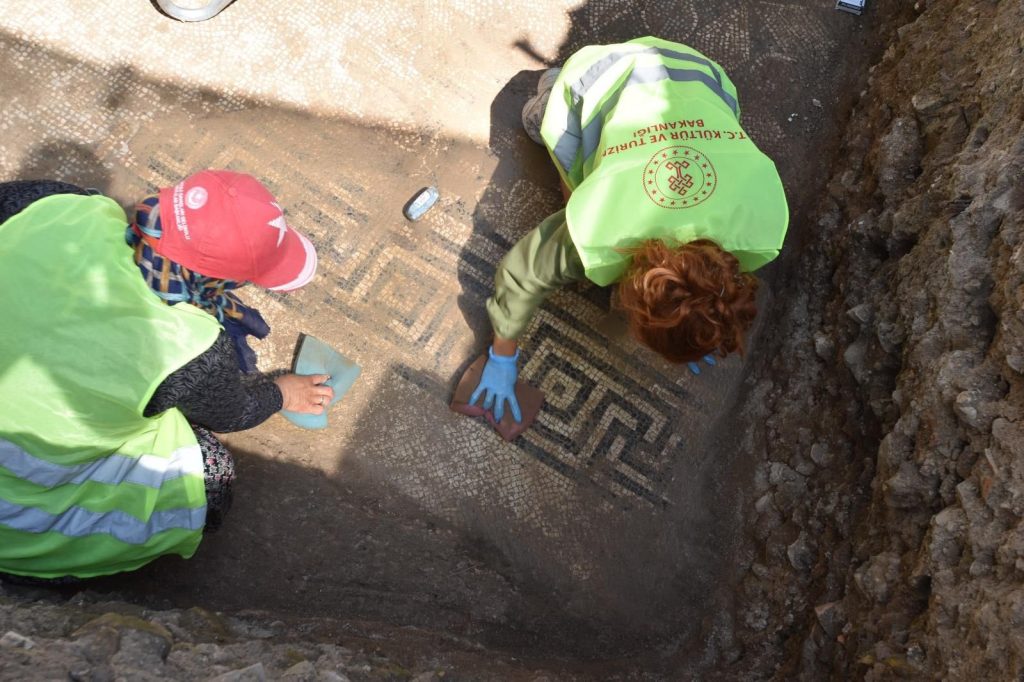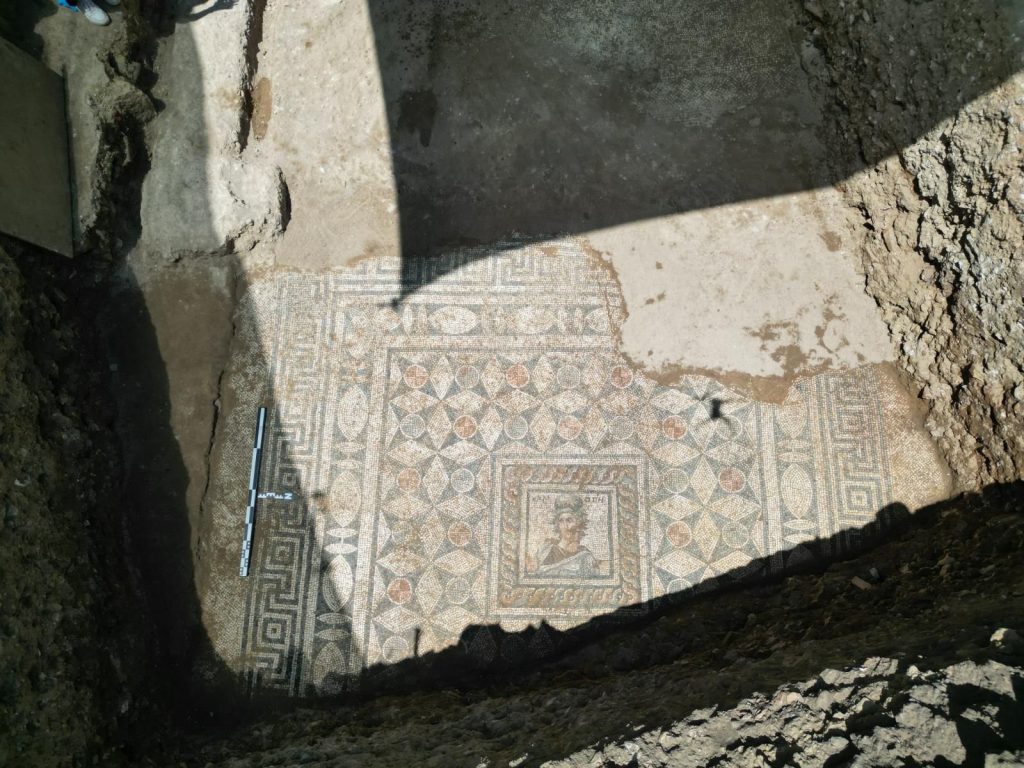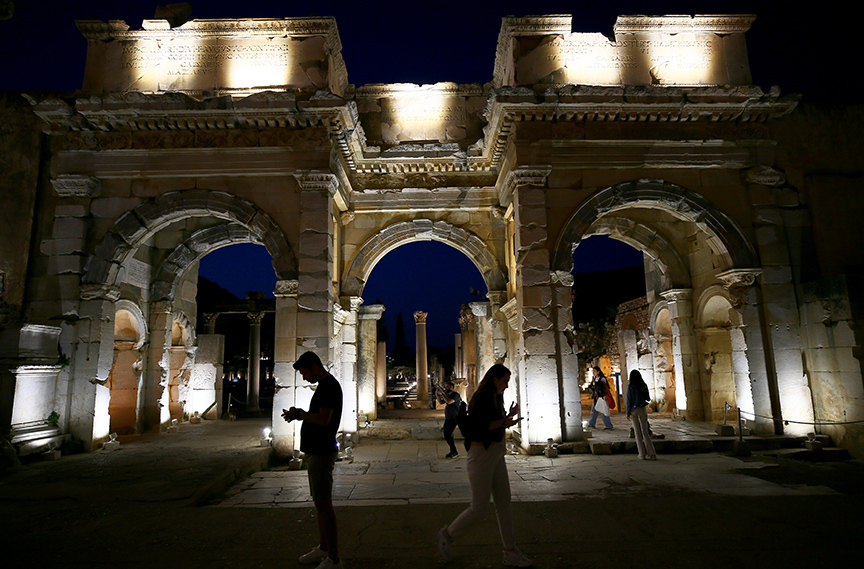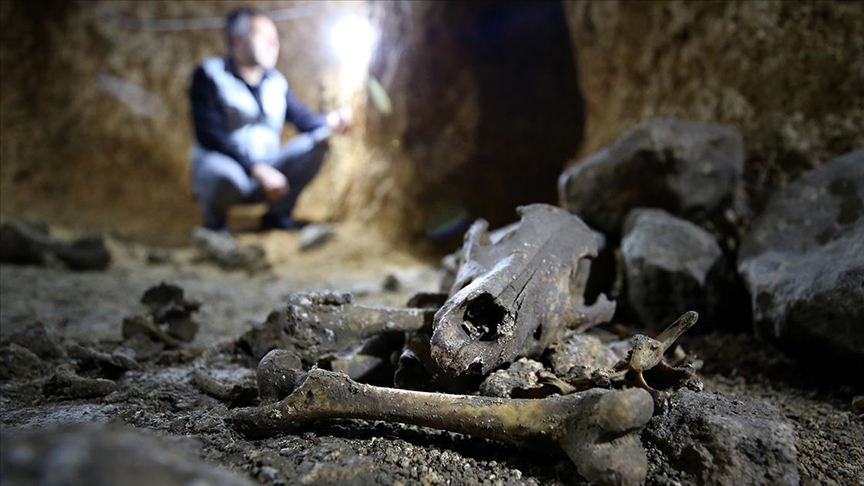During excavations in the ancient city of Side in southern Turkey, a 2nd century BC mosaic floor depicting the legendary Kalliope was discovered.
The Ministry of Culture and Tourism announced the discovery of the mosaic on its social media account X under the title A Historical Moment!

The ancient city of Side, where the mosaic depicting the muse Kalliope, is an ancient city in the Manavgat district of Antalya, founded in the 7th century BC and became an important port city during the Roman Empire. The city, built on a 350-400 meter wide peninsula, was one of the most important port cities of Pamphylia.

Kalliope (Greek: Καλλιόπη) is one of the Muses, one of the nine muses in Greek mythology. Her name means “beautiful voice” and she is known as the muse of epic poetry, epics and rhetoric.
Believed to be the daughter of Zeus and the titan Mnemosyne, Kalliope is usually depicted holding a writing tablet and a stylus (writing stick). Sometimes a roll of papyrus can be found next to her.
She is believed to be the inspiration for Homer’s epics Iliad and Odyssey. It also inspired famous poets such as Hesiod, Sappho and Pindar.




